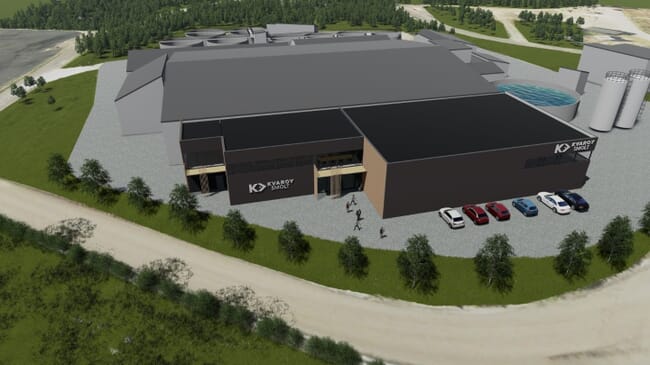
“This investment means we have better control in the smolt phase of production and that ultimately leads to increased production of fish,” says Kvarøy Arctic and Kvarøy Fiskeoppdrett CEO, Alf-Gøran Knutsen. “This project also lifts the total sustainability in our overall production of fish. We are always looking to improve and this is a perfect example of how we are accomplishing that goal.”
Strategically located inside Mo Industrial Park, Kvarøy Smolt has ample access to water and surplus heat from surrounding industry. This synergistic relationship and resource preservation is intrinsic to the ethos of Kvarøy Arctic and a step into the future of more efficient smolt production techniques. With the investment, Kvarøy Smolt will renovate two production halls, increasing smolt rpoduction to up to 10 million a year, install a new energy and treatment plant, create a new administration building, and optimise water quality throughout the production process. New steel tanks from AKVA Group, each holding approximately 190,000 litres of water, will be installed to nearly double the volume of smolt production. Each tank will utilise an oxygen recovery and CO2 stripping system, which reduces water consumption.
To reduce its energy consumption, Kvarøy Smolt buys hot water from the adjacent Mo Fjernvarme and utilises the residual cooling water from nearby Elkem Rana’s furnaces.
“Expansion of our facility in this location means we can support our own business and the surrounding businesses by harnessing and recycling energy. Through our collaborations, we do not need a greater fresh water supply. We’re fully utilising residual resources,” says project manager Stig Joar Krogli.
Key to the success of this expanded facility is an investment in the administrative building. “The people who work at Kvarøy Smolt are our most important resource,” says general manager John Morten Abelsen. “Modernising the facility for our team is just as important as upgrading the conditions for the smolt. It’s our priority to achieve the best possible conditions for our team and the fish to thrive.”
Research is also currently underway to determine if cleaned and dried waste from Kvarøy Smolt can be used to grow vegetables on a large scale inside the industrial park. The project is in cooperation with SINTEF and Mo Industrial Park.



